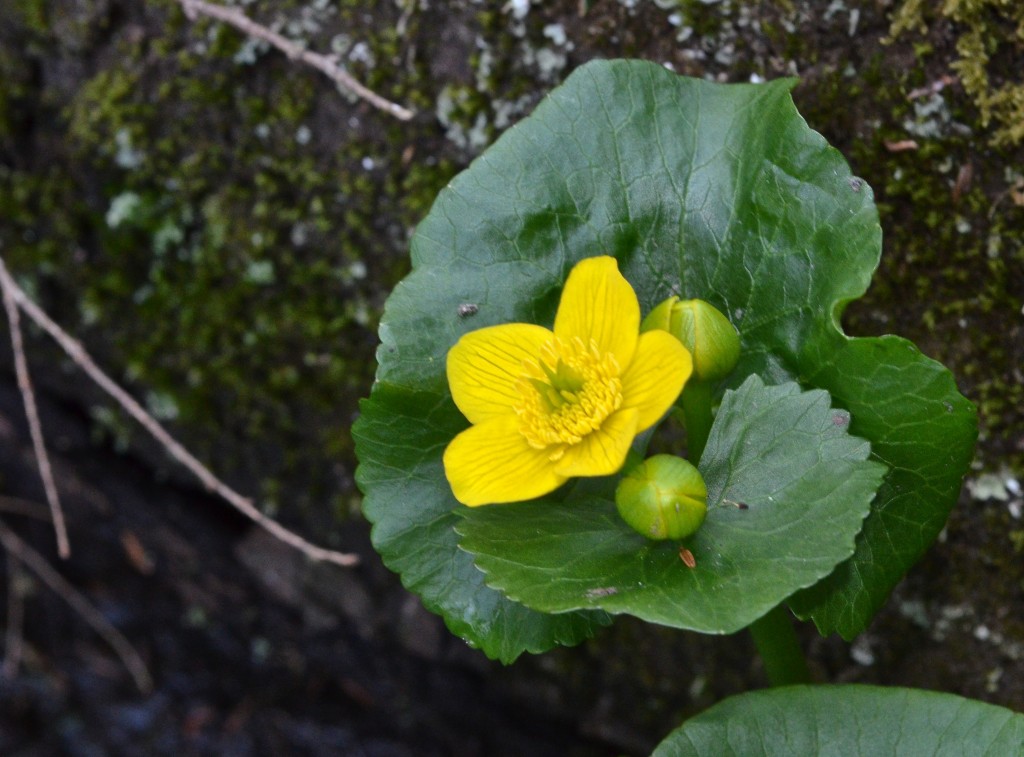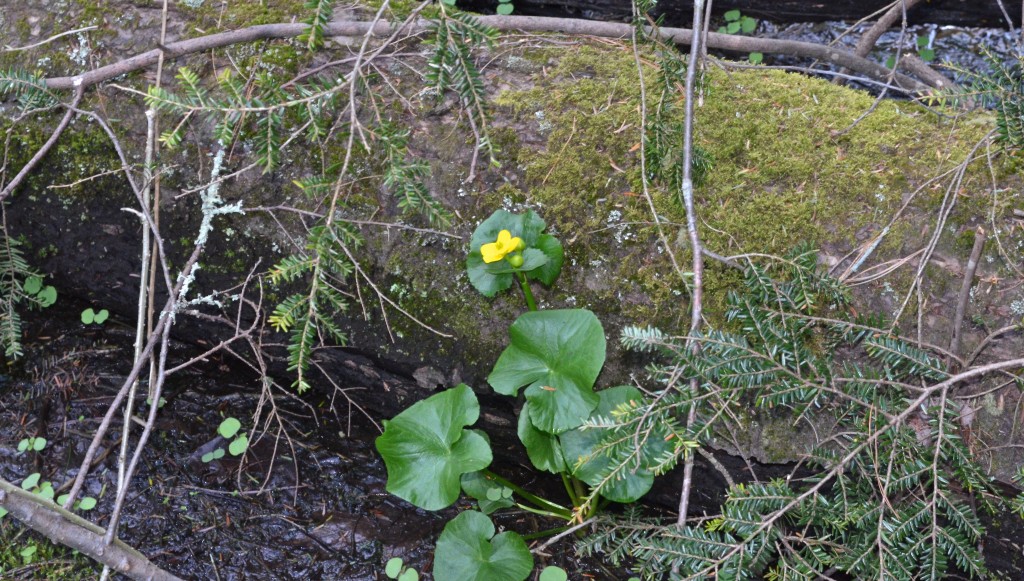
 I’ve seen this two places this year, both times with its feet in the water. The foliage is bad-tasting and toxic, and thus avoided by mammalian herbivores. (I just like to say mammalian herbivores.)
I’ve seen this two places this year, both times with its feet in the water. The foliage is bad-tasting and toxic, and thus avoided by mammalian herbivores. (I just like to say mammalian herbivores.)
Marsh Marigold (Caltha palustris)

Let us digress from admiring wildflowers for a moment and instead say Eww on behalf of this big snake who was basking on a rock very near the water lilies I photographed recently. An unusual sight — usually we just see garter snakes. The Northern Water Snake eats pretty much anything alive that fits in its mouth– frogs, birds, mammals. At night, it can eat fish sleeping in shallow water. It can swim on the water’s surface, or submerged. Thanks to Alert Wildlife Spotters Clara and Aaron for taking this photo. Colubridae family. Native.
Northern Water Snake (Nerodia sipedon)
Kudos to Alert Flowerophile Brian for leading me to this amazing sight, a flower to jolt the heart of any weary blossom-hunter. Quite big (about 4 feet tall) and showy, and only the second red flower I’ve recorded. On a little-used trail at Noanet. Flowers July through September. Likes to grow near streams, which is exactly where this one is. Pollinated mainly by hummingbirds because most insects aren’t big enough to manage the large tubular flowers. My book says it’s fairly common, but I don’t think I’ve ever seen it before. Leaf teas brewed for medicinal use by indigenous tribes. Native. It was introduced to Europe in the 1620s. Campanula family.
Cardinal Flower, Scarlet Lobelia (Lobelia cardinalis)
In a swampy area. I have an earlier post for a bigger, taller variety of rue. This one is small and low growing. Apparently rare in this region. (I got lost on this hike too! and saw a deer bound by that the dogs didn’t see, but when we got near where it passed, they smelled it and were in the grips of their DNA, desperate to chase!)
Mountain Meadow Rue, Cliff Meadow Rue, Lady Rue (Thalictrum clavatum)